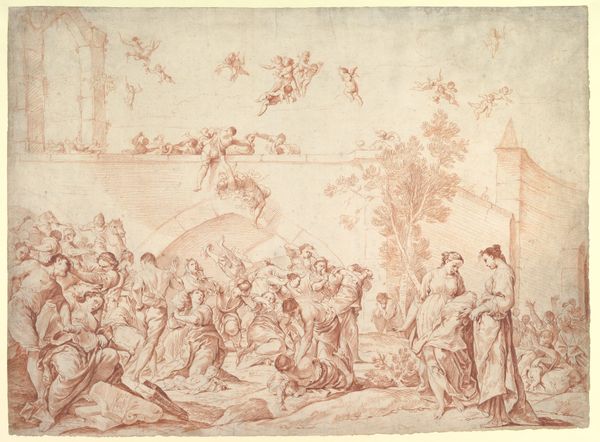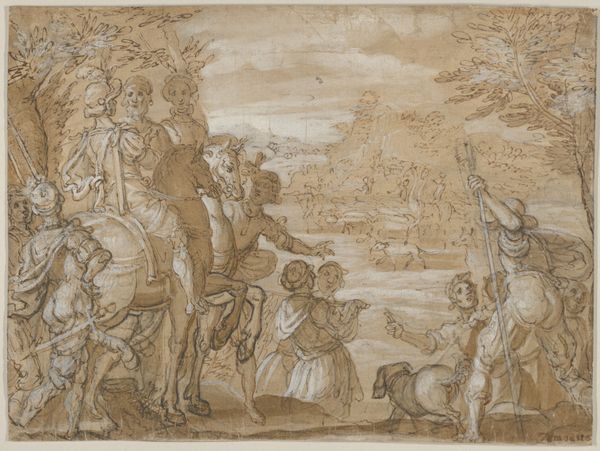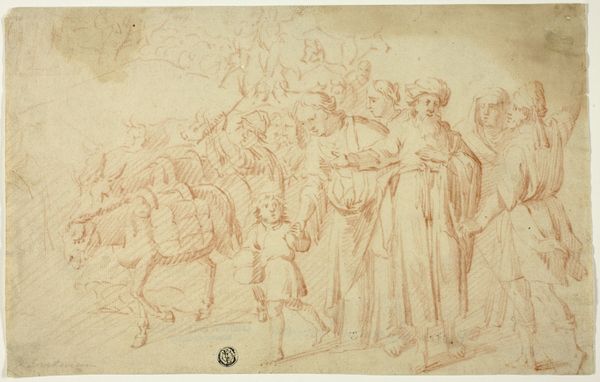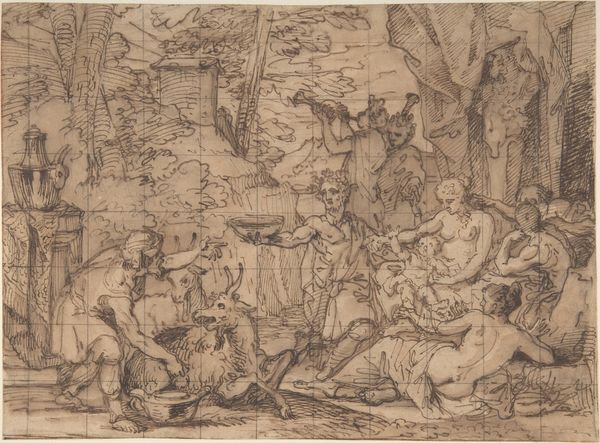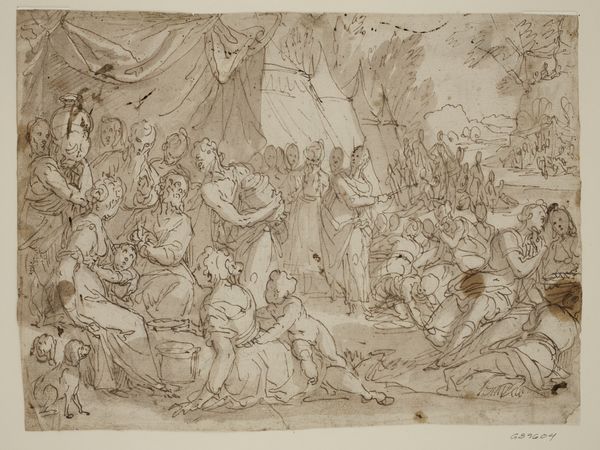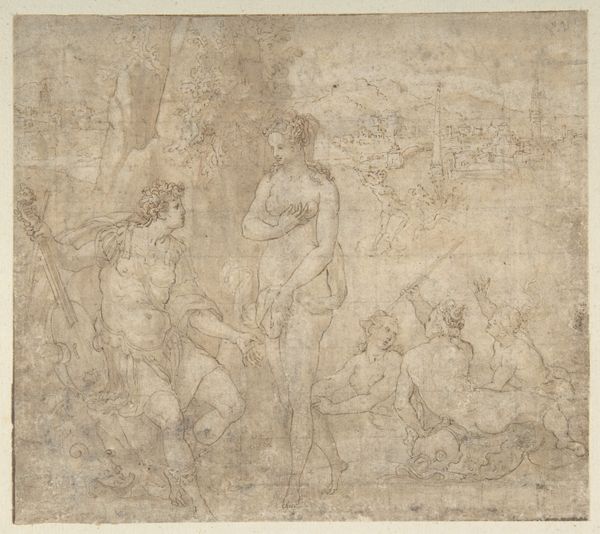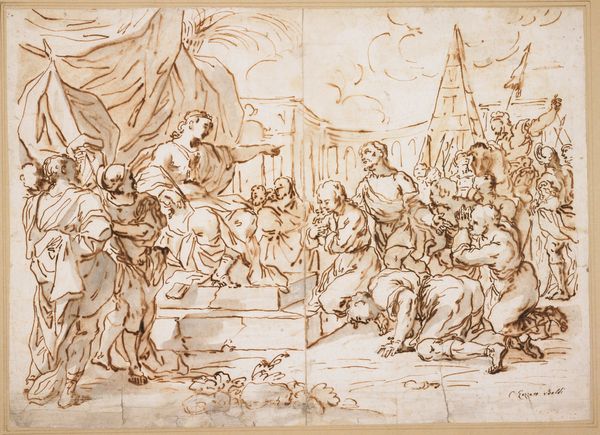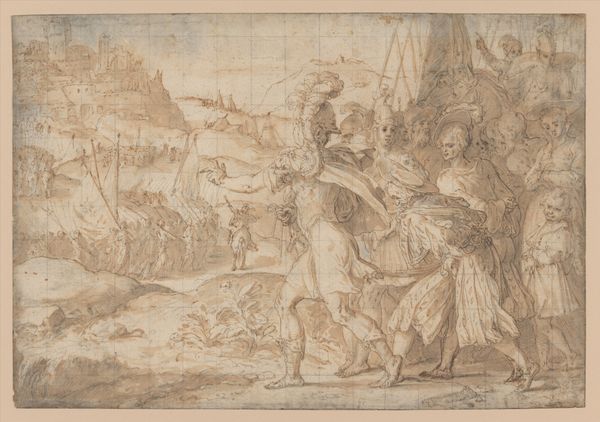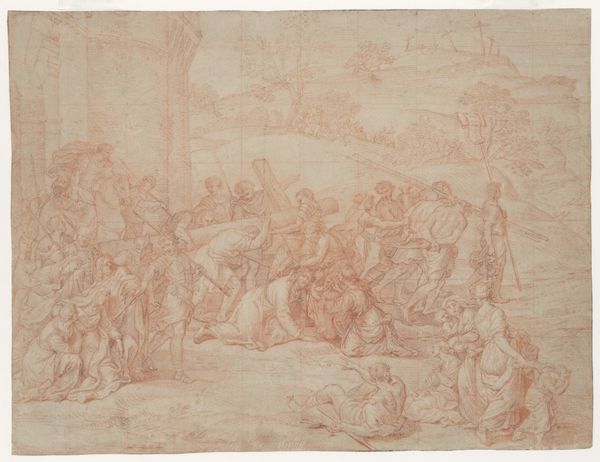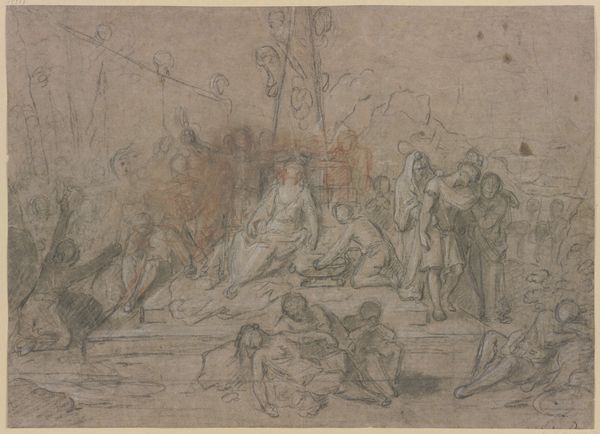
drawing, chalk, charcoal
#
portrait
#
drawing
#
allegory
#
baroque
#
charcoal drawing
#
figuration
#
chalk
#
charcoal
#
history-painting
Copyright: Public Domain
Editor: This chalk and charcoal drawing, "An Emperor Enters Rome in Triumph," depicts a classical scene with a great sense of depth. I'm struck by how Gerard de Lairesse evokes the drama of the scene, almost like a stage production. What do you see in this piece, considering the historical and cultural contexts? Curator: This drawing exemplifies the Baroque era's fascination with classical antiquity and the glorification of power. Considering Lairesse's position within the Dutch art scene, it's interesting to think about how this glorification functions. Is it a straightforward endorsement of imperial authority, or is it, perhaps, also engaging with contemporary debates about political legitimacy in the Dutch Republic? Editor: That’s fascinating. It makes me wonder, too, how the public at the time might have interpreted it. Was it common to portray such grandeur in drawings meant for a wider audience, or was this more typical for private collections? Curator: Excellent question. Drawings in this period served multiple purposes – preparatory studies, independent works of art for collectors, and even teaching tools within academies. Knowing this was for the Städel Museum—a public institution—invites us to consider its role in shaping historical understanding and cultural values. Was this meant to inspire, to educate, or something else? Editor: So the location shapes how we view it even today! I hadn’t thought about it that way. Curator: Exactly. Museums and galleries frame our interpretation. By considering where and how it was displayed, we see art’s political and social role more clearly. Editor: Thanks, I’m leaving with so much more insight than I came in with. The importance of social context really shifts how I understood the art. Curator: Indeed! It transforms our viewing experience into something more dynamic and socially aware.
Comments
No comments
Be the first to comment and join the conversation on the ultimate creative platform.
